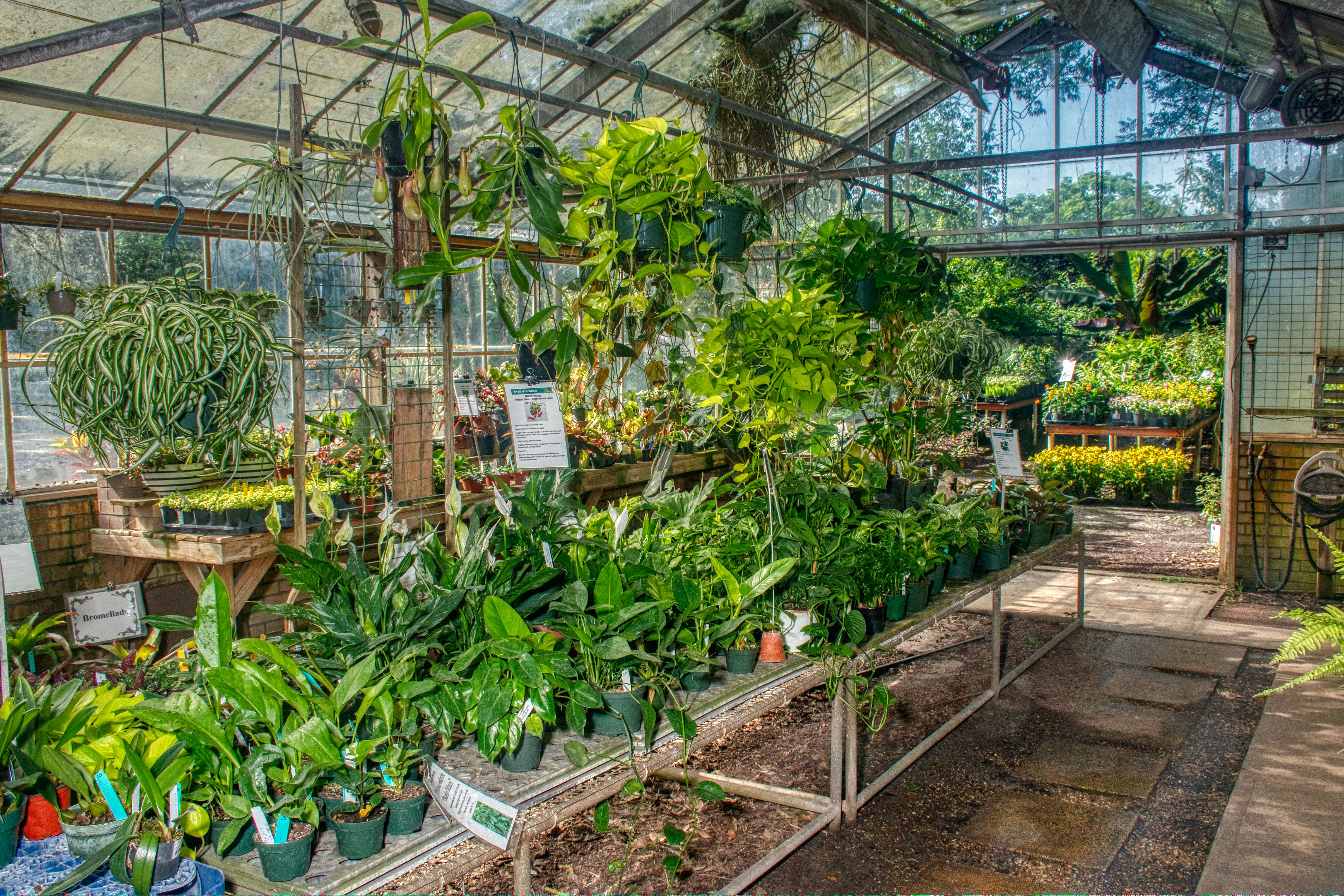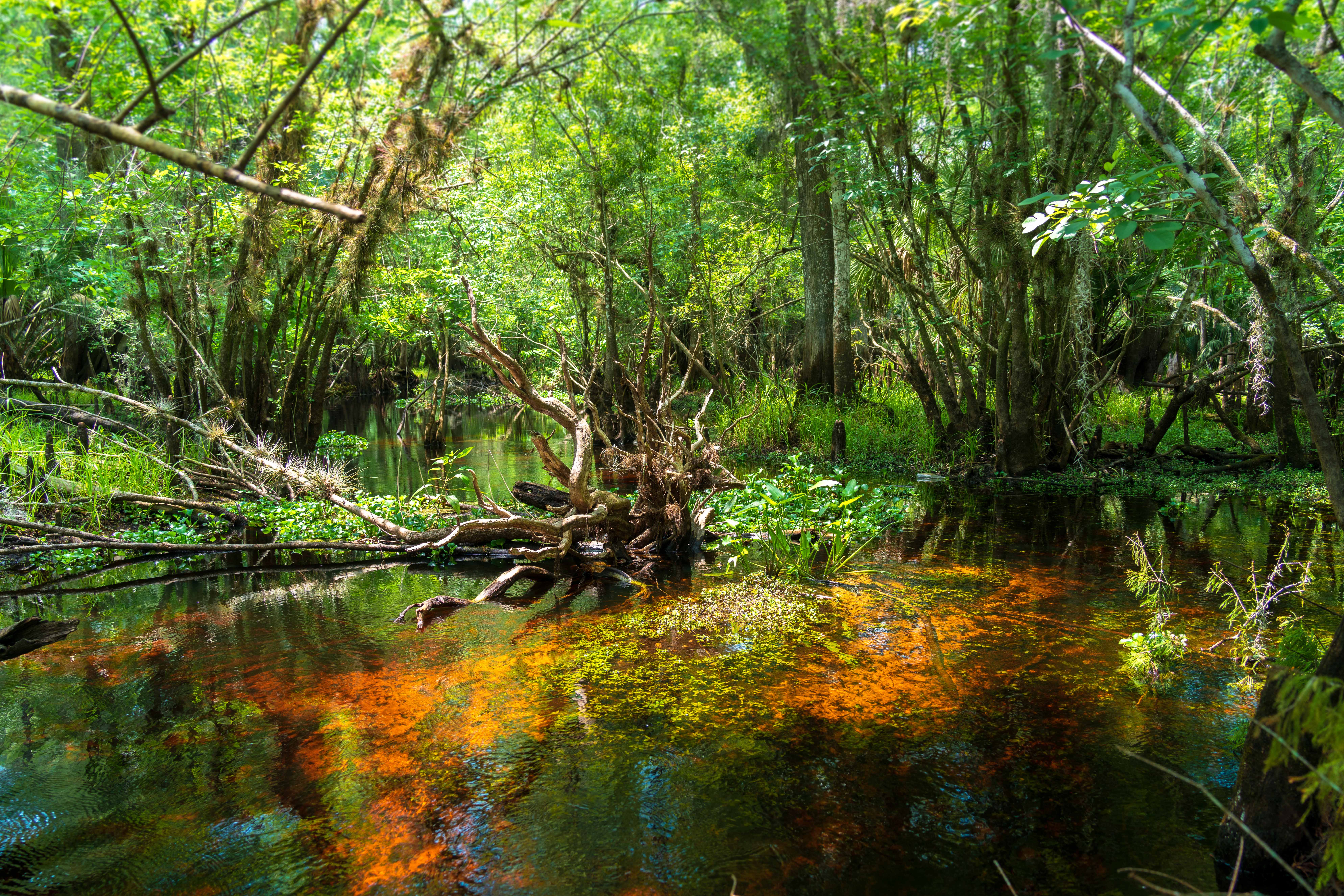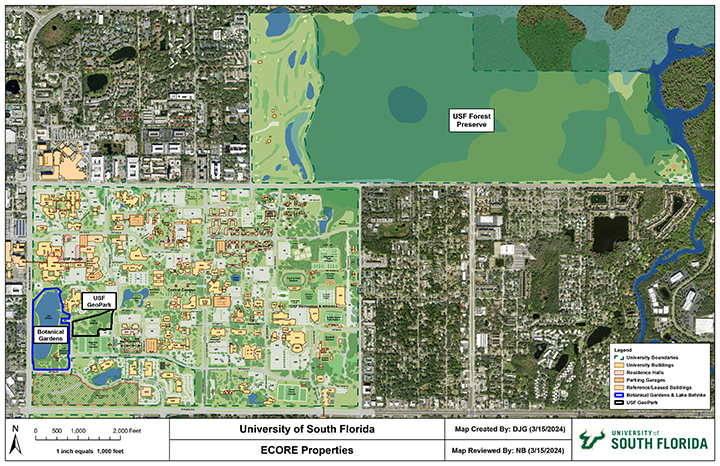Who We Are
What is ECORE?
The College of Arts and Science established ECORE to secure, utilize and promote the environmental assets: Forest Preserve, Botanical Gardens and the GeoPark. The Ecore System will support a variety of activities related to environmental sustainability, Ecology, archaeology, and Horticulture research and education as well as community engaged conservation activities by merging USF Forest Preserve, the Botanical Gardens and The GeoPark under one mission and managing Director.
USF Botanical Gardens

Botanical Gardens plant shop
The USF Botanical Gardens is part of the College of Arts and Sciences. It consists of about 16 acres of gardens and greenbelt on the USF Tampa campus. The Gardens maintains a living collection of more than 3,000 of plants, animals and natural habitats.
Attracting thousands of visitors annually, the gardens serve as an important outreach component of USF. Plant festivals and other events attract enthusiasts from around the state to shop for rare and unusual plants and learn about sustainable gardening. The Gardens supports ongoing research in medical botany, biology, engineering, for example, and provide opportunities for service-learning to USF students. From student organizations to many Tampa Bay area volunteers, there a many ways to get involved on campus.
USF Forest Preserve

Forest Preserve cypress dome
The USF Forest Preserve is a 500-acre plot of wetland and sandhill habitat located north of USF and is a unique resource as this relatively small parcel is surrounded by a region of rapid urbanization, cradles a diversity of native Florida habitats such as streams, numerous wetland habitat types, pine flatwoods, hardwood forest, and highly endangered scrub, as well as the plants, animals, other life forms, and natural processes (e.g., water purification) that rely on these habitats. The Preserve hosts many native vegetative communities and species of conservation concern, and it contains artifacts of indigenous peoples, including human burials. The intact natural ecosystems, geological strata, water flows, and human history of the Preserve provide many natural benefits, such as improving air quality, mitigating greenhouse gas emissions, sheltering biodiversity and rare species, and securing Florida's cultural heritage. It is not currently open to the public.
The Preserve offers considerable value to research at USF by supporting a variety of research projects relating to ecology, biology, geology, archeology, engineering, and more. Notable features include:
- The upland habitat in the Preserve is home to sensitive populations of environmentally threatened gopher tortoises and kingsnakes, among other sensitive species.
- No other land in coastal central Florida preserves a substantial piece of endangered sandhill habitat.
- The mix of integrated upland and wetland ecosystems in the USF Forest Preserve creates exceptional research and educational resources and opportunities.
- The Preserve contains over 400 plant species, some of which are known to occur nowhere else in Hillsborough County.
- Wetlands at the base of the Preserve filter water draining into the Hillsborough River, a state designated Florida Outstanding Water region.
USF GeoPark
The USF GeoPark was established in 2001 as a resource for on-campus geological teaching and research. Located on the west side of campus, the park is an exquisite example of covered karst, a type of landscape found in west-central Florida that is both characteristic and challenging for geological study. The GeoPark includes geophysics lines used in hydrogeology, geophysics, and geomorphology courses. It also features "The Rock," a six-ton sample of the Ocala Limestone from Lecanto Quarry in Citrus County, which provides an on-campus look at the Florida aquifer. The GeoPark is planned to evolve into an on-campus community education facility and become the destination of self-guided environmental tours starting from the nearby Botanical Gardens. The park is a valuable teaching and research resource that highlights the geology and hydrogeology of the region and exhibits water-resource matters.
